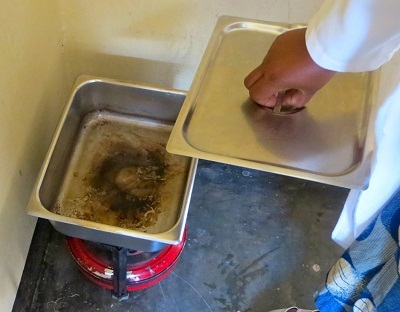Sterilization Without Electricity: Technology being adapted to make surgery safer in low-resource environments
In the worlds of development and global health, the ultimate goal is widespread, systemic improvement for all. Governments, philanthropists and socially minded global corporations commit billions of dollars over many years to accomplish gradual, long-term change through established and well-understood methods: expansion of the electrical grid and population-level disease prevention.
But as intermediate benchmarks are set and milestones are celebrated, millions continue to die from treatable conditions every day and millions more cannot work due to disability or illness. It is documented that at least 11 percent of the global burden of disease can be treated with simple, low-cost surgical procedures. (The actual percentage is likely significantly higher, but there is limited data grouping disease states according to appropriate treatment.)
Saving these lives and preserving economic capacity for under-resourced communities calls for immediate, out-of-the-box solutions that address current realities. Social entrepreneurs are stepping up to meet this challenge with innovations that are low-cost, scalable and, most importantly, can be used right now in the places where they are most needed.
Eniware, for example, is adapting state-of-the-art, commercially available room-temperature gas sterilization technology into a power-free, low-cost, portable medical instrument sterilization unit designed to make safe surgical care a reality where it was previously impossible. The technology has been developed and commercialized for the U.S. market by Eniware’s parent company, Noxilizer, which entered the U.S. industrial sterilization market in 2012 and will soon be available in European and Japanese markets.
Eniware’s version consists of a rugged sterilization container, cartridges or ampoules of liquid nitrogen dioxide released through a simple mechanism, and a sodium permanganate scrubber to absorb residual gas once the sterilization cycle is complete. Electricity is not required at any step of the process.

Worldwide, 1.2 billion people lack access to electricity, and despite recent large allocations of public and private funds, current investments will not be able to keep up with existing need and rapid population growth. Essential surgery requires sterile instruments and sterilizing medical instruments is currently impossible in the absence of an energy source. Sterilization is also prohibitively expensive for many health systems, with autoclaves typically costing over $10,000. Eniware’s unit will be available in the developing world market, likely within the next year, for less than $500, with the consumables needed for each sterilization cycle priced at less than $5.
(Left: Boiling water over a gas burner being used to disinfect instruments in lieu of an autoclave at Gasiza Health Center in Rwanda.)
Several members of the Eniware team recently returned from visits to district hospitals and health centers in Rwanda, Uganda and Kenya. In facilities at every level, we encountered autoclaves that had been broken for months, or were simply inoperable due to their large electricity requirements. Even where electricity is available, autoclaves are difficult to maintain. Chemical disinfectants and pots of boiling water are being used in the absence of sterilization, but health workers are well aware that invasive procedures performed with disinfected (instead of sterilized) instruments greatly increase the chances of infection.
Imagine going into labor with your first child in a place where the only available health facility has no electricity. Now imagine that your labor became obstructed (an especially common complication for under-nourished women in their first pregnancy), and the only hope for preventing obstetric fistula, death of the fetus or even your own death is emergency surgery. Without the ability to sterilize instruments, that surgery presents the risk that you will contract an infection, another leading cause of maternal and infant death. This dilemma confronts millions of women every year in the developing world, making childbirth a very dangerous proposition.
Surgeons like Dr. Ian Clarke in Uganda speak poignantly of doing amazing work to save these lives with whatever resources are available. But the difference between the quality of care that can be provided in such settings and the health care that we take for granted in the developed world weighs heavily on frontline doctors and caregivers, and it weighs on us as health care entrepreneurs as well.
Dr. Clarke has performed lifesaving cesarean sections using a small generator to provide light and suction, and ether for anesthesia. But a small generator cannot muster enough electricity to reliably run autoclave cycles for sterilization. We are motivated by the idea that basic surgical procedures – necessary to save lives – should not be life-threatening themselves.
Much like other problems facing the developing world, the need for essential surgery and the problem of infection caused and spread by medical care is immediate, overwhelmingly huge and growing. (The UN projects that the 49 least developed countries will double in population by 2050.)
The current Tacloban recovery in the wake of Typhoon Haiyan is perhaps a wake-up call to the massive problems that humanity will continue to face as the global population booms and our resource and infrastructure requirements stretch beyond capacity. Big companies traditionally do not take the risks necessary to develop the creative, simple, affordable solutions that these problems call for, preferring to wait for risk-taking entrepreneurs to document success. Beyond the traditional investments in long-term global health and development efforts, there is a huge space for young companies to fill with innovations that address a pressing need, provide usable solutions and can be effectively scaled to reach those in need.
The scope of our global problems is only going to expand, so there is nothing for social entrepreneurs to do but dive in and start grappling with these issues. Eniware is a very small fish in an ocean of giant global health actors, but we are confident in and committed to the huge impact that our product will have on this landscape. Other entrepreneurs motivated to change the world and with a passion for health care should jump in and join us. There’s plenty of room.
James Bernstein is CEO and Ariel Trilling is a communications associate at Eniware.
- Categories
- Health Care
